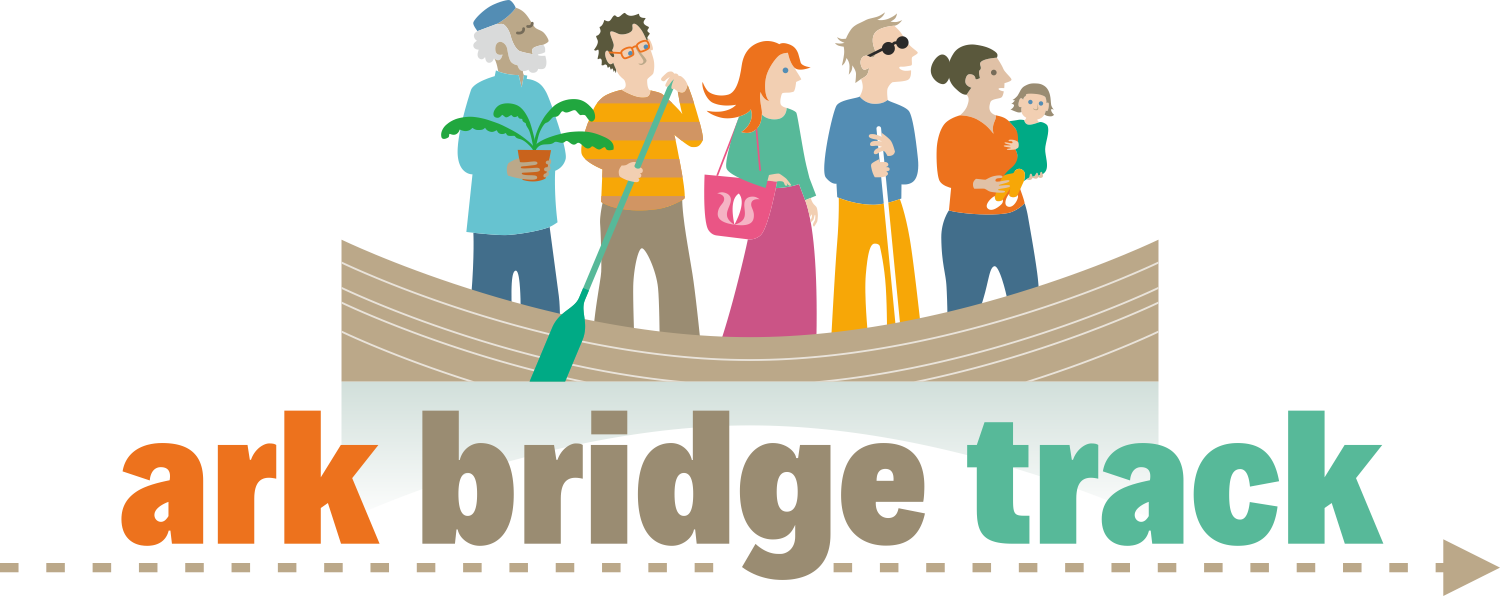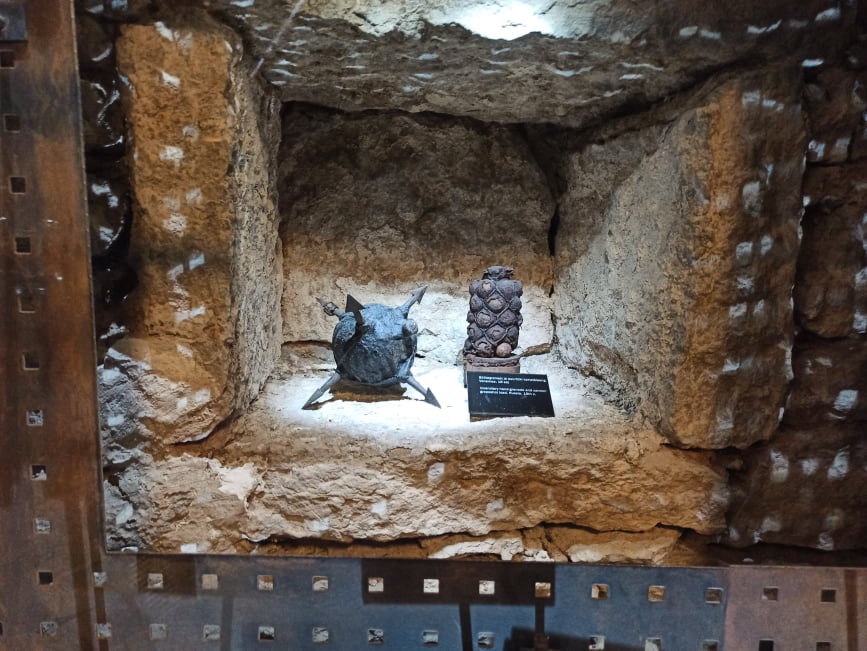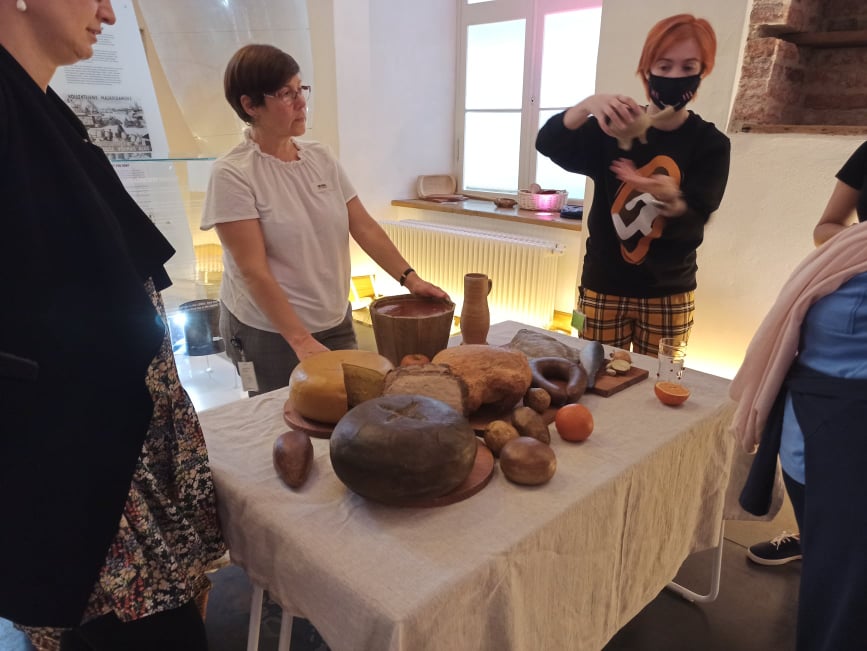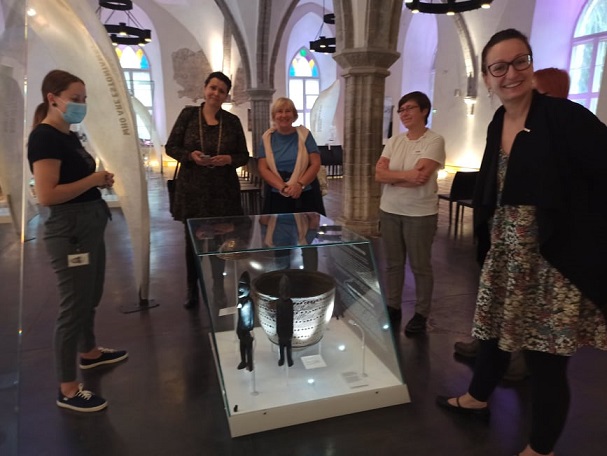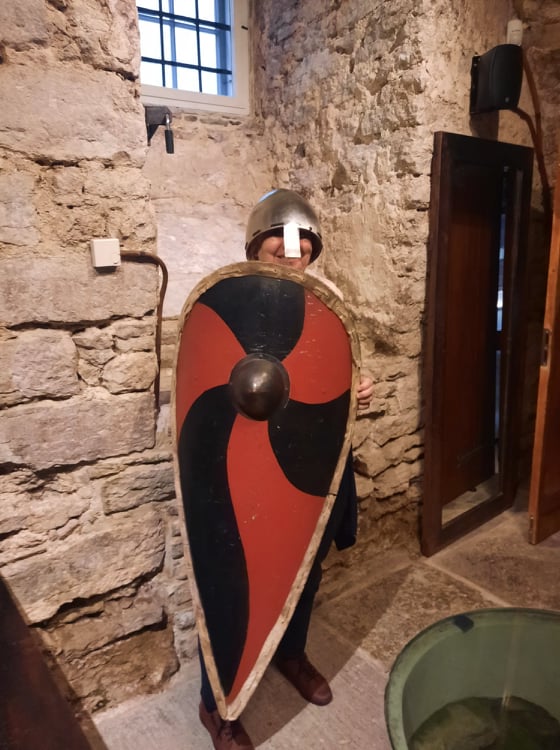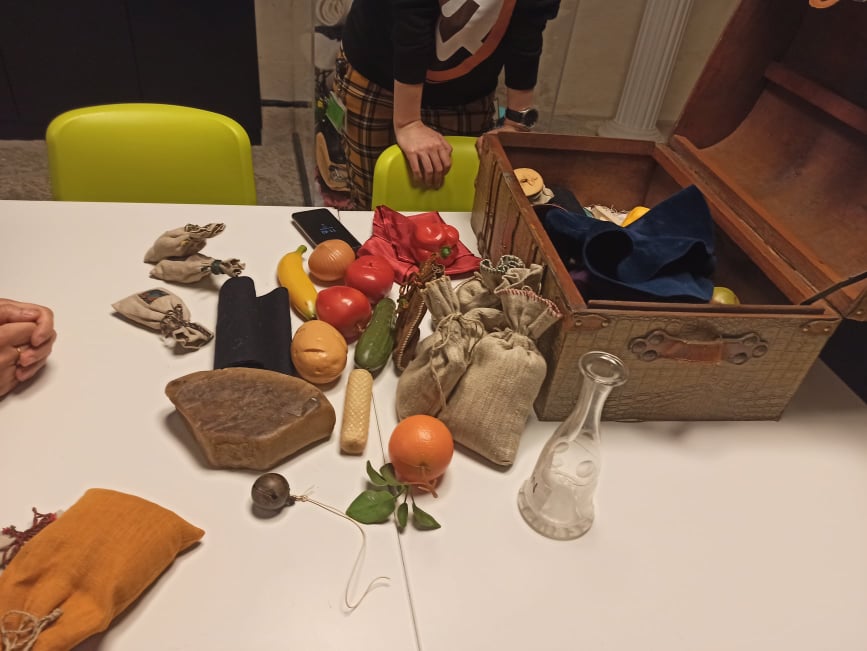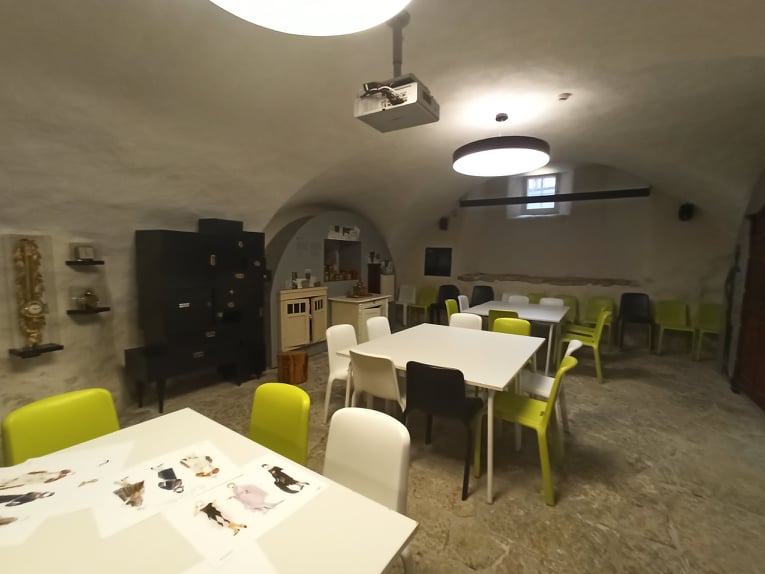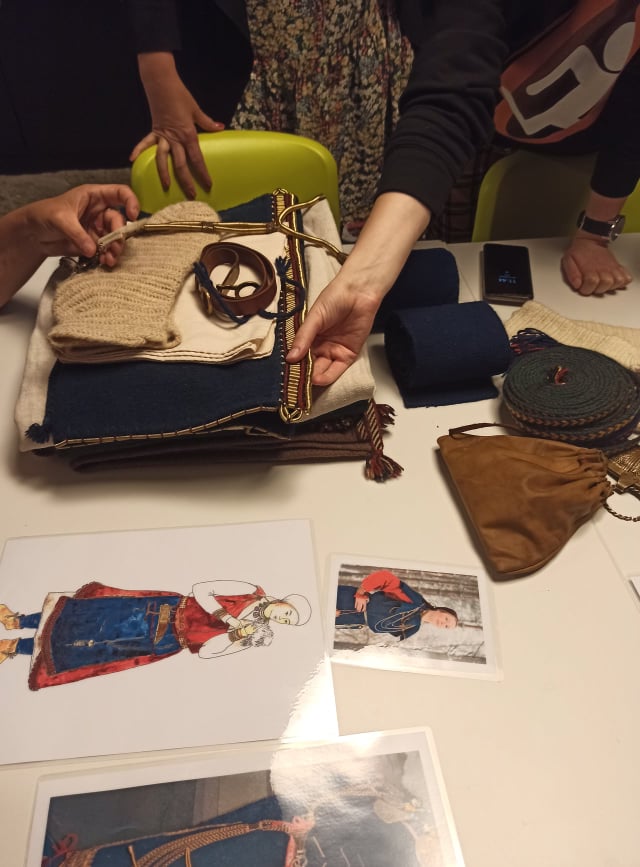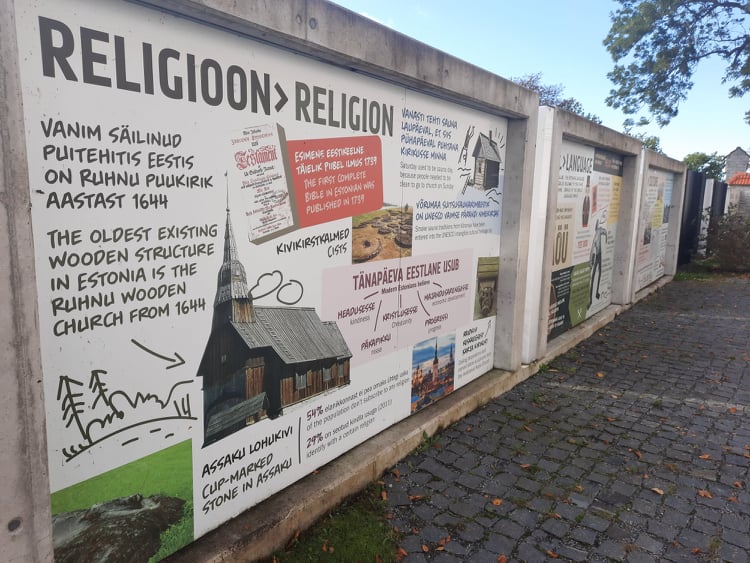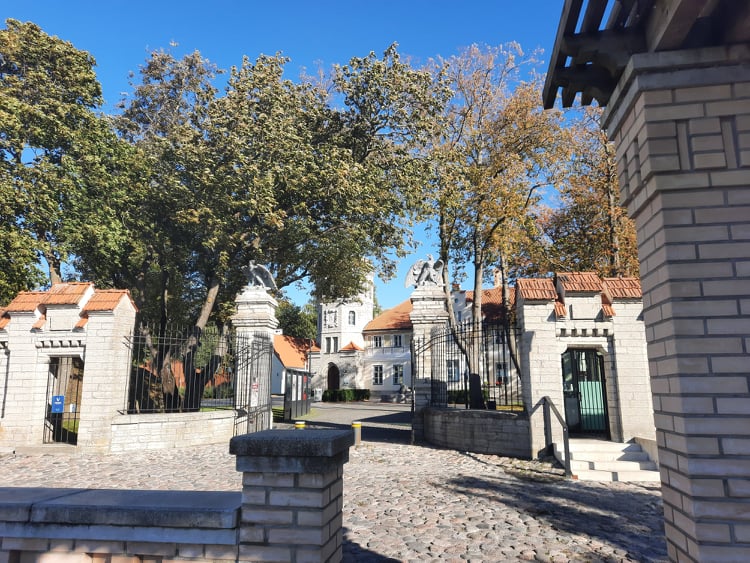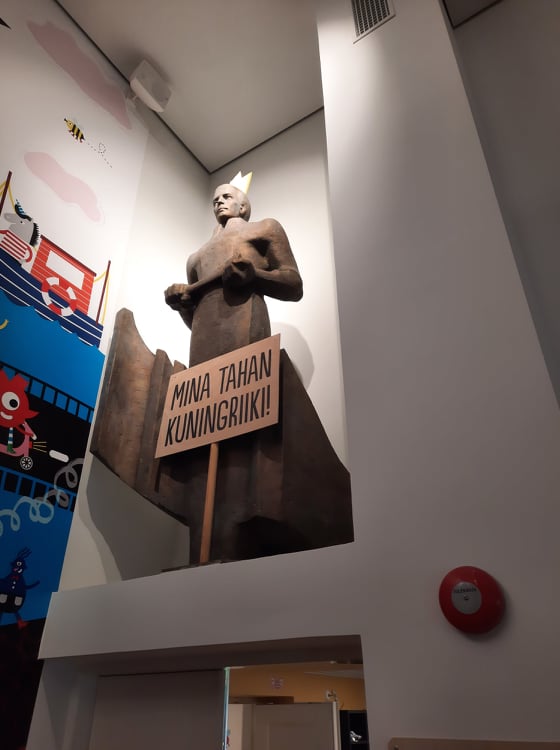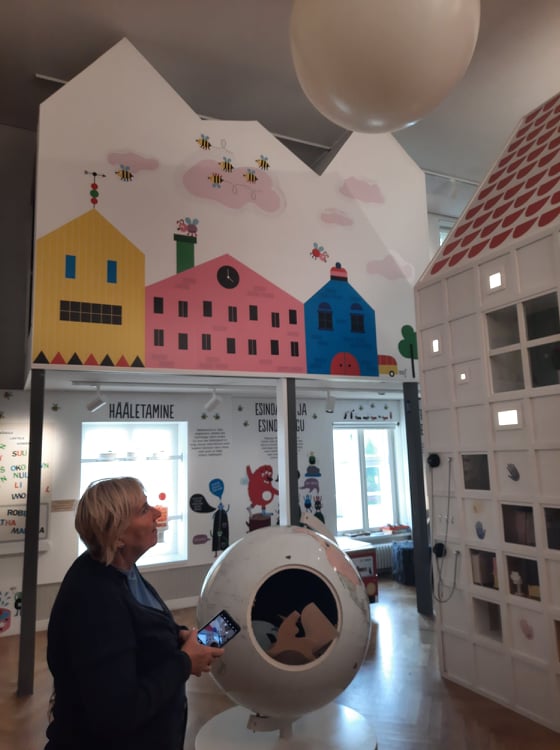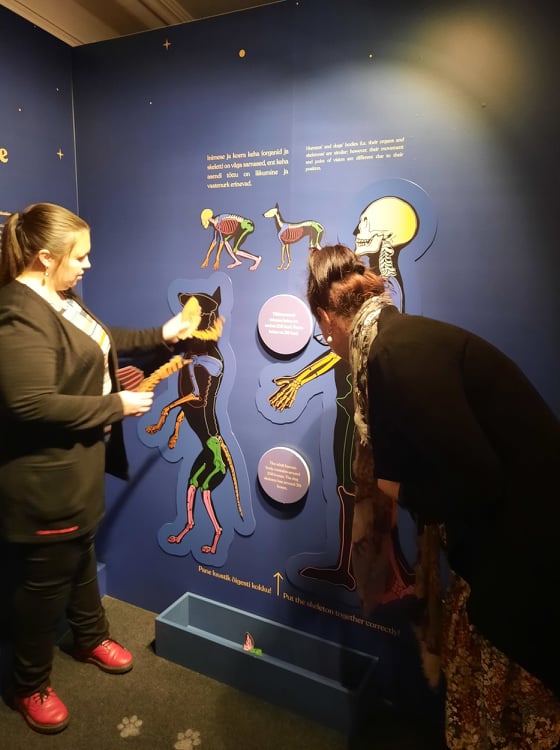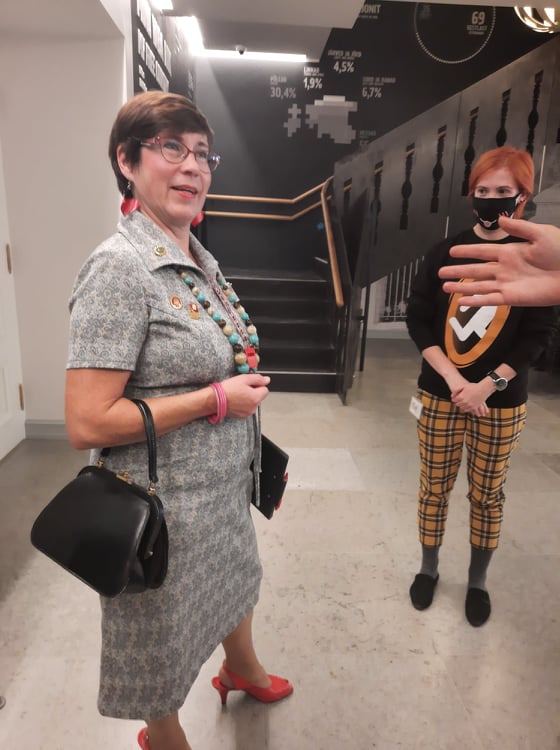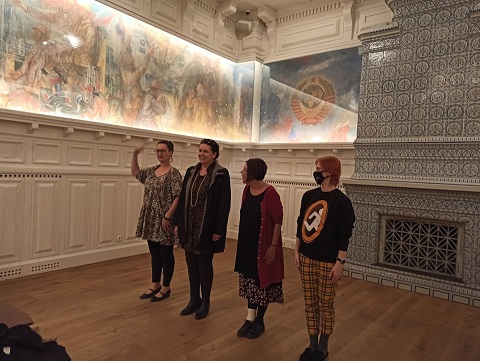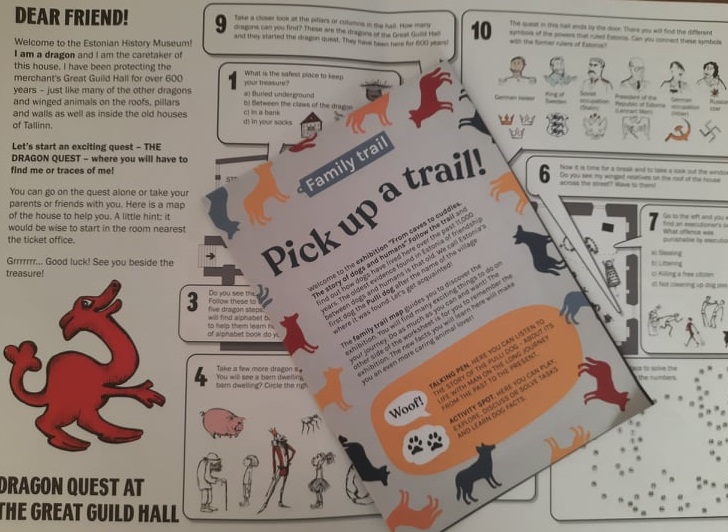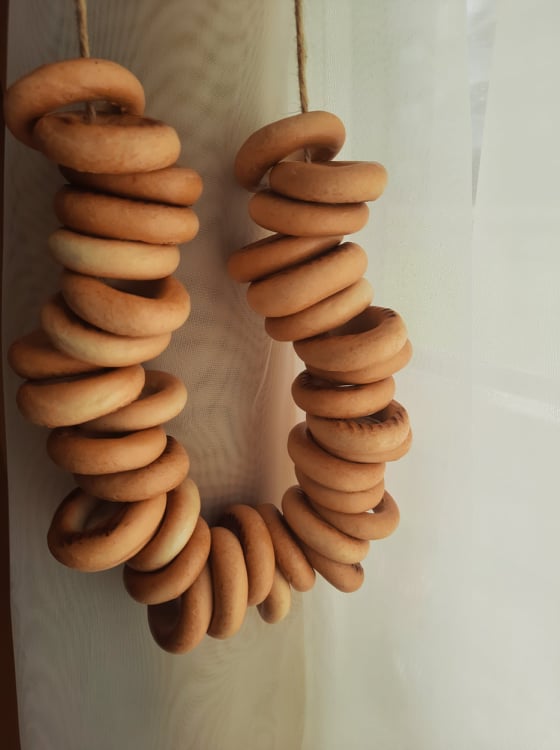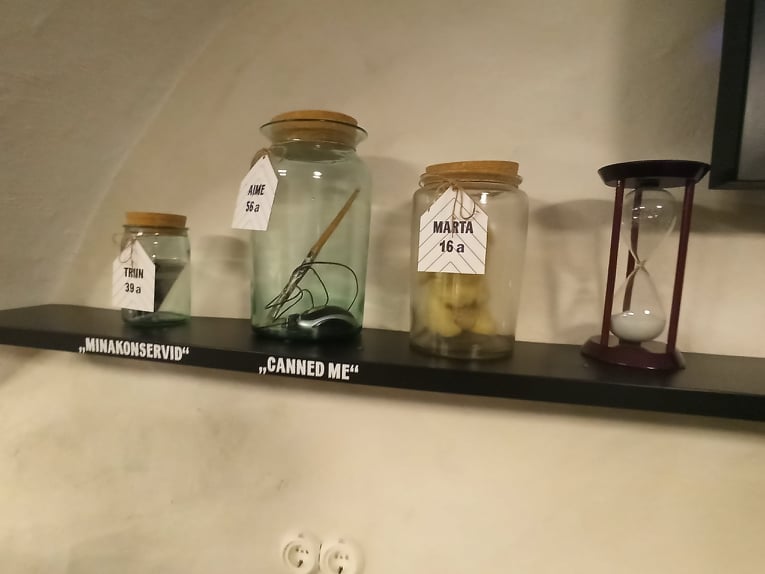
Like several other public collections, the Estonian History Museum has been managed by a foundation for a few years now. This means increased independence, still sufficient funding, and easy-to-plan projects. The museum has 4 exhibition spaces: the Great Guild Hall, with a comprehensive collection of Estonian history, and the Theatre and Music Museum are in the old town. In the northeast part of the city, right on the seashore, the Maarjamäe Palace houses the Maarjamäe History Centre and the Film Museum. The latter is one of the most popular attractions in Estonia.
We first saw the historic building where we were greeted by Liisi Selg, head of the education department, and her museum educator colleagues. The guided tour of the permanent exhibition is an integral part of other programmes for adults, including building history tours. There is a separate tour to explore the nooks and crannies of the museum. Many people registered for the events of the local Heritage Day to explore the museum from the basement to the attic. The installation is not crowded, thematic display cabinets show the most expressive objects and raise questions that can spark exciting conversations. Both adults and children enjoy the playful and interactive tasks. While there are touchscreens in the room, the emphasis is on the artefacts and other items that can be touched or sensed in other ways. The information shared is often based on funny associations and anecdotes. Easy-to-access content is in Estonian, Russian and English, and the devices are easy to use. Guided tours and programmes are available in these 3 languages.
In the activity room, groups can discover exciting costumes, stories in jars, replicas of artefacts and they can take part in handicraft workshops. Museum educators are “compatible” with every location; more employees will probably be hired next year. When there are complex events, volunteers also help out. The key sight in the basement is a room where wines and other alcoholic drinks that are available here are on display (we were happy to see 4 puttonyos Tokaji aszú on a list).
On this level, there is also the “Spirit of Things” displaying the most unique pieces in the collection and the deservedly popular weapon exhibition. Upstairs you can see old coins, and behind a hidden door, a dragon is guarding the treasure. Dragons seem to be hiding everywhere.
Wine tours are popular, and there are regular concerts and the rooms are rented out for various programmes. Relations with education institutions are excellent. Once a year museums welcome teachers and update them about current developments and services. Education specialists believe if you use humour, games and your senses, you can retain a lot of information. Demonstration tools are not obsolete either; these play a key role in the most action-packed programmes.
While most visitors to the buildings in the old town are Estonians, Maarjamäe Palace is popular with Russian visitors, too, as it is associated with the Russia of the tsars. It was built by Count Anatoli Orlov-Davydov as a summer residence, and then it served several purposes before it was made accessible to the public in 2018, at the 100th anniversary of the Estonian Republic. The park is as a miniature of Estonia, and it provides a pleasant environment to children and adults alike. Several films were shot here; you can see a detailed animated video about this in the great hall of the palace. In the back garden there is an outdoor exhibition of Soviet public monuments. In the near future, it will be accessible to blind people and will offer them a specially developed programme. In the building, there is an interactive exhibition about the relationship between dogs and humans, offering valuable experiences for all age groups. The exhibition “The Children’s’ Republic” fully focuses on the needs of elementary school children, who can take part in an election and learn about how the Parliament works. The exhibition “My Free Country” presents the history of the past 100 years, from the birth of the republic to the present day.
We went on an exciting journey in time, led by Anu Vladimirovna, and heard about old stories, memories, music and popular series. As a surprise, the Hungarian series, A Tenkes kapitánya was also mentioned. We arranged old and modern images of Tallinn and discussed what opportunities we have to collect the memories of older generations. At the end of the programme, we got a reward, an edible necklace. We put it away as a keepsake, as we were also offered a home-made mushroom pie and coffee in the cosy kitchen. Employees of the museum can take a break here between groups—they sometimes have as many as 4 or 5 a day. There is an explorer’s sheet for families at every location, as it is important that they can spend quality time together here, build memories and return one day. Of course if children can spend some time on their own with some crafts and games, parents can look around a bit 🙂
